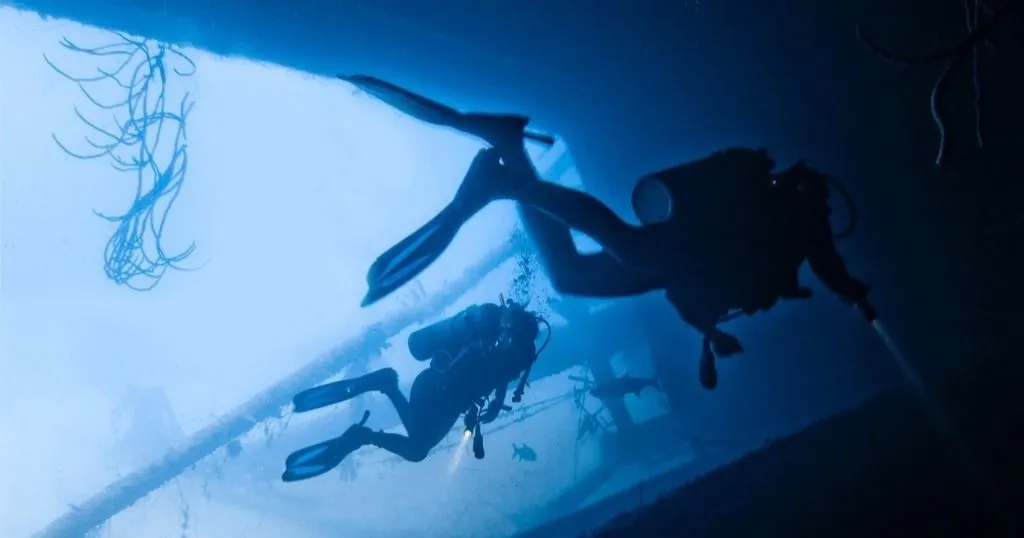Diver behavior captured with wearable cameras
Observing the actual wreck diver behavior using video recordings made with wearables cameras, researchers aimed to enhance effective management strategies for underwater cultural heritages.
Posted by
Published on
Mon 19 Jul. 2021
Topics
| Coding Behavior | Coding Schemes | The Observer XT | Video Observation |

When you descend below the surface of the water, you are welcomed into a world that is full of color, life, and beauty. There is a lot to discover in the underwater world, for example turtles, coral and reefs, old shipwrecks, and many fish. Diving is adventurous, makes you feel like you are flying without the danger of falling, and you will experience an ultimate peace and quiet, which enables you to unwind and relax.
Wreck diving is, just like ice and cave diving, one of the specialties in diving. It is exciting to dive into a historic site, and view something that once floated on the surface, now shelters marine life. Each wreck dive offers a chance for a new discovery. Wrecks are fascinating windows to the past.
It is beyond dispute that the underwater world must remain as well protected as possible. However, the divers' behaviors can unintendedly pose risks to the integrity of site cultural heritage.
Understanding actual diver behavior
Cultural heritage sites are often fragile and cannot regenerate once disturbed or damaged. Most likely behaviors involving physical contact by the diver or their equipment with underwater cultural heritage can have undesirable affects. The research team of Joanne Edney of the Southern Cross University in East Lismore, Australia, conducted a study to understand the actual wreck diver behavior to enhance effective management strategies for underwater cultural heritages and dive tourism.
Using wearable cameras to understand in-water behavior, their study aimed to:
- identify diver contact and non‐contact behaviors at shipwrecks
- clarify the frequency of diver contact behaviors and durations of non‐contact behaviors on shipwrecks

How to make accurate and reliable observations
How can you make a detailed and reliable observation underwater? Self-reporting is not really an option, as it can be inaccurate and social desirability may play a role. Studying actual behavior entails participant observation, but having an observer present at the site isn’t an option either, as this can influence someone’s behavior (Hawthorne effect).
Video observation, on the other hand, improves reliability, accuracy, trustworthiness, and quality of data and data analysis. The method is discrete, less distracting, and moreover, the data can be viewed, coded, and analyzed repeatedly.
Applying wearable cameras as a research tool
Wearable action cameras have become commonplace amongst recreational scuba divers due to their small size, ability to be taken to 60 m depth, high video quality, and ease of use. Therefore, the researchers used head-mounted cameras in the present study. The wearables provided a dynamic view of the diver’s visual environment, were unobtrusive, and were able to capture data over a period of time.
Coding diver behavior to enable analysis
The study was conducted at Chuuk Lagoon, a world‐renowned wreck diving destination. Chuuk was a key strategic advance military base during World War II for Japanese navy vessels, merchant vessels and aircraft, pivotal to Japan’s push into the Pacific. Today, sustainable diving practices are important for the longevity of this tourism resource and protection of the important cultural heritage values.
On 23 dives by 20 divers on 12 shipwrecks located, data was collected. The behaviors recorded reflected diver impacts on underwater cultural heritage, such as touching artifacts, activities divers engaged in and what divers spent time looking at.
All data was exported to The Observer XT for coding and analysis. Each behavior was coded and noted in real‐time for the duration of time they occurred, with the exception of ‘hand pulling’ behavior, which was coded as ‘point’ type. Examples of coded diver behaviors were:
- diver entered an overhead environment
- diver was actively engaged in looking at feature of a wreck
- diver deliberately touched an artefact
- diver sits on wreck or artefact
Download here the FREE white paper 'How to set up behavioral coding - 7 tips'
Behaviors recorded around or inside the wrecks
The research team analyzed 14 hours of participant-generated data. It appeared that contact behaviors accounted for almost 15% of behavior frequencies, of which hand pulling on wrecks was the most frequent. This is a wreck diving technique used to minimize silting (swirling sand or fine particles from the ground) and move more efficiently against currents. Other frequent contacts were touching artifacts and holding onto wrecks.
The behavior ‘touching artifacts’ was examined in more detail because it can have consequential impacts on underwater cultural heritage. Modifiers were added to this analysis to enable more detailed descriptions of this behavior. For example, modifiers were cleaning, picking up and holding, or picking up and moving the artefact.
Picking up and inspecting artifacts was the most frequent behavior.
Non‐contact behaviors represented the majority (>98%) of behavior durations, such as looking at features of wrecks (e.g. machinery), viewing marine life, and being inside wrecks (e.g. cargo holds) to see features such as munitions, vehicles, glassware, shoes, and clothing.
FREE TRIAL: Try The Observer XT yourself!
Request a free trial and see for yourself how easy behavioral research can be!
- Work faster
- Reduce costs
- Get better data
Insight into diver behavior
The first‐person perspective of the data collected in this study offers unique insight into diver behavior, capturing the participant’s environment as they saw it. The contact and non-contact behaviors have been mapped which provides extensive knowledge of diver in‐water behaviors.
It is encouraging to notice that the ‘touching artifacts’ behavior accounted for a small proportion of contact behaviors. Any contact with a wreck’s fabric or artifacts can accelerate decay, and cleaning removes protective coatings, further accelerating their decay. This should be avoided as much as possible. Therefore, education of divers about the causes and consequences of diver contacts with wrecks and their contents as well as encouraging more sustainable use of the sites, remains important.
References
Edney, J.; Dimmock, K. & Boyd, W.E. (2021). Understanding Diver Behavior on Underwater Cultural Heritage: Enriching the Observation Record Using Video Methods. Sustainability, 13, 5601. https://doi.org/10.3390/su13105601
https://www.bunchofbackpackers.com/why-scuba-diving-travel-backpacking/
Related Posts

Behavioral research explained: stimuli, emotion, interaction, and coding

Conference about techniques and methods for measuring behavior
